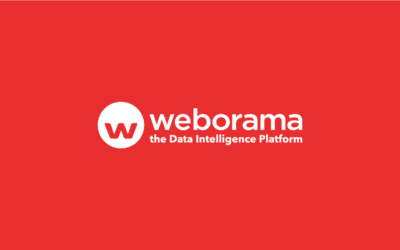Described as “the third wave of digital advertising”, the Retail Media sector is changing. To date, more than 90% of advertisers already partner with retailers to reach their consumers. And this is just the beginning: IAB Europe specifies that online Retail Media advertising spending will exceed that of traditional linear television by 2026 to reach 25 billion euros in Europe.
This transformation can be explained by several factors: the growth of e-commerce, a new desire by retailers to monetize their data and an even greater demand from consumers for a digital world without third-party cookies.
The Challenge: Unlocking the Power of Retailer Data
Retailers, once hesitant to unlock and monetize their data, now recognize its pivotal role, particularly in the face of the impending demise of third-party cookies. Simultaneously, brands are increasingly drawn to new opportunities, seeking reliable data sources to thrive in the post-cookie era and drive sales across their product distribution channels. Retailer audiences have become highly prized, offering access to more precise targeting, especially at the point of purchase.
To remain relevant and respectful of consumer choices, brands are swiftly adjusting their marketing strategies. This transformative journey is steering marketers toward innovative adtech solutions that prioritise privacy, consent, and personalization in equal measure.
The Solution: Data Clean Rooms
Among the array of alternatives to third-party cookies, Data Clean Rooms (DCRs) have emerged as a critical tool for data collaboration.
The core principle of a Data Clean Room is to enable data analysis and processing without exposing sensitive or personally identifiable information (PII).DCRs provide retailers with a secure technology, strictly controlling access to authorised parties in compliance with data protection regulations, thereby mitigating the risk of data breaches.
Here are the key principles that underscore their significance in a cookieless world:
- Data Is Never Shared: In a DCR, data remains within the controlled environment. The goal is to provide aggregated data results for insights and analysis without compromising individual privacy.
- No IDs or PII Leave the DCR: IDs and PII remain concealed and inaccessible outside the clean room, ensuring that even within the environment, analysts work solely with anonymized and aggregated data.
- Group By Queries: DCRs utilise “group by” queries to aggregate data based on specific dimensions or attributes, allowing for pattern analysis without revealing individual details.
- JOIN Clause on Hashed IDs: When necessary, DCRs can perform JOIN operations on hashed or anonymized identifiers, ensuring the protection of individual identities.
- Minimum Records for Anonymity (K-Anonymity): By establishing a minimum record threshold for result sets (MIN_RECORDS_K_ANONYMITY), privacy protection is enhanced. If the record count falls below this threshold, the query returns zero to prevent data triangulation.
- Avoiding Data Triangulation: Data triangulation, a privacy concern, involves using aggregated data to indirectly identify individuals. Setting a minimum record threshold helps mitigate this risk.
Adhering to these principles, DCRs strike an essential balance between data analysis and privacy protection. Retailers must uphold these standards to maintain trust and compliance with data privacy regulations. Continuous monitoring and auditing of clean room processes are critical to ensuring data privacy over time.
Weborama’s DCR: Accelerating Data Collaboration
Weborama’s Data Clean Room addresses these challenges by facilitating accelerated data collaboration strategies while maintaining data control. Its solutions include:
- A robust contractual framework that supports collaboration on sensitive or confidential data without compromising security or privacy, fostering mutually beneficial data collaboration between providers and recipients.
- An intuitive no-code solution accessible to all business departments, breaking down silos and enabling use cases without extensive human investment. For more advanced cases, manual SQL queries can be performed.
- True interoperability achieved through an open, agnostic, and multi-cloud solution, reinforced by various native connectors that enable the full utilisation of the digital ecosystem without constraints from a single source.
- Professional support from local Weborama experts to harness the full potential of the DCR, including first-party monetization, CRM enrichment, marketing automation, actionable customer insights, media activation, and reliable measurement.
This flexible and versatile system makes it compatible with the technological environments of publishers, retailers, and advertisers.
Opening up new opportunities in a world of cookies
Data Clean Rooms offer numerous opportunities to accelerate Retail Media activities in a cookieless world, especially for activation and measurement. Illustrating with two use cases we have implemented:
Data Clean Room for Insights:
A retailer looking to better understand the purchasing preferences of its loyal customers. With a DCR, this entity can merge its own first-party data with that of a partner, for example, a publisher with a large online audience. By using recorded traffic as a key indicator, overlaying these data sets reveals customer segments more inclined to purchase based on the content they engage with on the publisher’s websites. This information does not contain any personally identifiable information (PII). With these insights, the retailer can make informed decisions about its inventory, adjust its marketing strategies, or even consider new product lines.
Data Clean Room for Campaign Effectiveness Measurement:
- Case 1: An e-commerce platform launches a campaign for a new product range. Thanks to the DCR, it can analyze the recorded traffic after displaying advertisements and calculate conversion metrics, leveraging first-party data from major publishers running their ads. Thus, it is now possible to measure campaign performance – even without knowing exactly who is within it – by comparing conversion rates of those exposed to the advertisement and those who were not.
- Case 2: A consumer goods company wants to understand how its online campaigns impact in-store sales. By integrating its advertising campaign data with the retailer’s transactional data in a Data Clean Room, it can use Research Online Purchase Offline (ROPO) measurement and create customized audience segments for targeted advertisements.
With the advent of a cookieless world, Data Clean Rooms emerge as powerful and effective alternatives for Data Collaboration and privacy protection. They enable retailers and brands to navigate confidently in this rapidly changing landscape, innovate, and respect consumer choices.
*Source: GroupM
Mykim Chikli, CEO EMEA, Weborama



